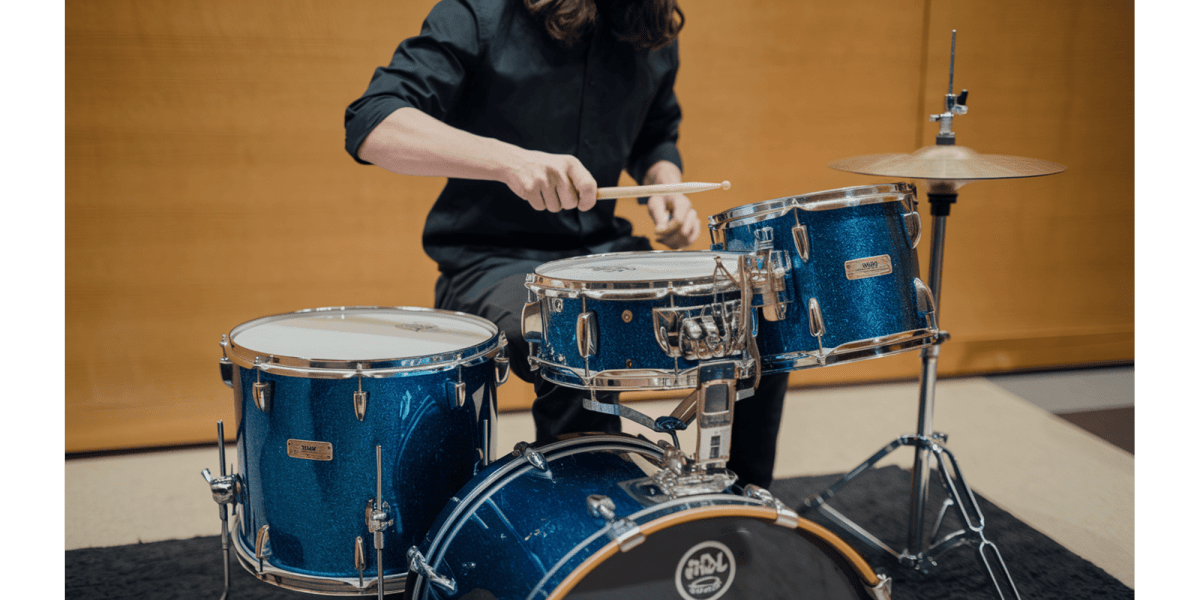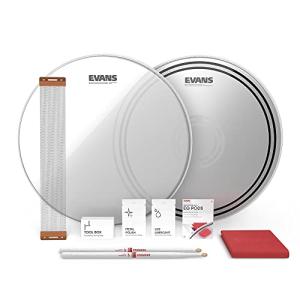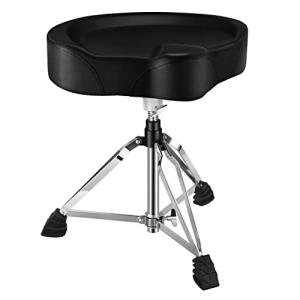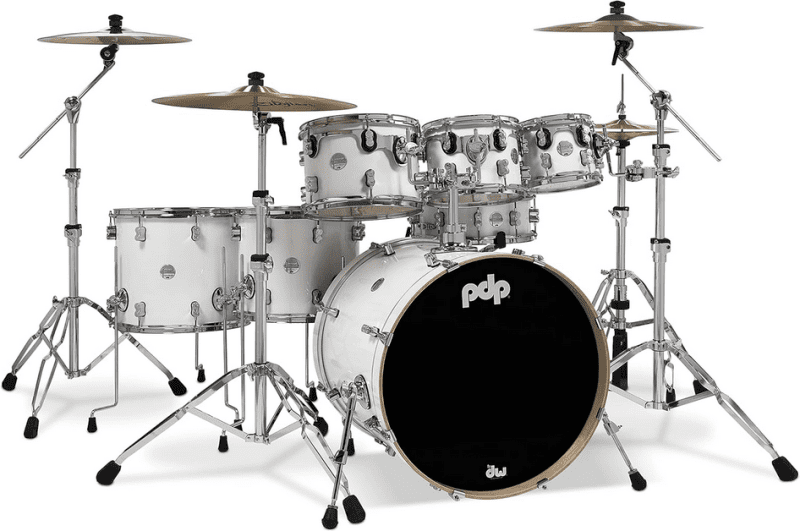As a drummer, I know how key drum kit maintenance and tuning are. If you ignore these, your sound quality will suffer. You might also face more repairs and a shorter drum life.
Keeping your drum kit in good shape makes it sound better and last longer. Regular drum care includes cleaning, tuning, and checking your drums. With a simple drum care guide, you can keep your kit sounding great.
I'll show you how to care for your drum kit in this guide. We'll cover the tools and supplies you need. This will help you maintain your kit and get the best sound possible.
The Importance of Regular Drum Kit Maintenance
Keeping your drum kit in good shape is key for sound quality, durability, and performance. Regular care ensures your drums sound great and last long.
How Maintenance Affects Sound Quality
Maintaining your drum kit well affects its sound quality. Dust, dirt, and worn parts can make the sound dull. Cleaning and checking regularly keeps the sound clear and vibrant.
As a seasoned drummer once said,
"A clean drum is a happy drum."
This simple truth highlights the importance of drum care tips for the best sound.
Also, it is crucial to keep drumheads and hardware in good shape. Worn drumheads and loose or corroded hardware can harm the sound.
Extending the Life of Your Drum Kit
Regular maintenance keeps your drum kit sounding great and lasting longer. By checking and maintaining your drums, you catch and fix problems early. This is a key part of drum kit maintenance essentials.
Keeping drums clean and dry prevents rust and corrosion. Storing them right also prevents damage. Following these drum maintenance tips lets you enjoy your kit for years.
Preventing Common Drum Issues
Many drum kit problems, like tuning issues, can be avoided with regular care. Regular checks on drumheads, hardware, and other parts prevent problems. For example, keeping drumheads tight and tuning lugs secure prevents tuning issues.
Regular maintenance keeps your drum kit in top shape. It ensures the best sound and performance. This is a basic rule for every drummer to follow.
Essential Tools and Supplies for Drum Kit Care
https://www.youtube.com/watch?v=QU1oZRC-PHw
Keeping your drum kit in shape starts with the right tools and supplies. Good care boosts your drums' sound and extends their life.
Tuning Tools and Equipment
To tune your drums right, you need special tools. Drum tuning is an art that requires precision. The right tools make a big difference.
Drum Keys and Torque Wrenches
A drum key is key for tuning drums. It tightens or loosens the tension rods. A torque wrench ensures even pressure for consistent tuning.
- Drum key: Essential for adjusting tension rods.
- Torque wrench: Helps in applying even pressure for consistent tuning.
Dampening Products and Accessories
Dampening products control drums' resonance and tone. Using the right dampening techniques can significantly improve drums' sound quality.
- Moon gel: A popular dampening product that reduces ring and resonance.
- Dampening rings: Used to control overtones and achieve a cleaner sound.
Cleaning Supplies
Regular cleaning is key for your drum kit. Cleaning supplies help keep your drums looking and sounding their best.
- Drum shell cleaner: Designed to clean drum shells without damaging the finish.
- Hardware cleaner: Used to clean and maintain the hardware components of your drum kit.
- Microfiber cloths: Gentle on surfaces and effective for wiping down drums and hardware.
Evans 14" EC Reverse Dot Snare Drum Kit
Get incredible durability and sound control for your snare with this versatile and dynamic drumhead
Product information
$85.99
Product Review Score
4.78 out of 5 stars
161 reviews
Product links
Evans 14" EC Reverse Dot Snare Drum Kit
Get incredible durability and sound control for your snare with this versatile and dynamic drumhead
Product information
$85.99
Product Review Score
4.78 out of 5 stars
161 reviewsProduct links
Replacement Parts to Keep on Hand
Having replacement parts ready helps fix issues fast. Regularly inspecting your drum kit and replacing worn-out parts is key to maintaining its performance.
- Drumheads: Spare drumheads ensure quick replacements for worn-out ones.
- Cymbal felts: Replacing cymbal felts can improve the overall sound quality of your cymbals.
- Bearing edges and other hardware: Spare parts for your drum kit's hardware prevent downtime during performances.
How to Maintain and Tune Your Drum Kit: Step-by-Step Guide
Keeping your drum kit in top shape is easy with a simple guide. It covers key steps to ensure your drums sound great. Follow these steps regularly to keep your kit in perfect condition.
Creating a Maintenance Schedule
Setting up a maintenance schedule is key. It should include daily, weekly, and monthly tasks. This keeps your drums in great shape. Always check your kit for damage after each use.
Regular Cleaning Procedures
Cleaning your drum kit often is crucial. It improves the sound quality and longevity. Clean the shells, hardware, drum heads, and cymbals regularly.
Shells and Hardware
Use a soft cloth to wipe down the shells and hardware, removing dust and grime. A gentle cleaner is okay for tough spots, but avoid harsh chemicals.
Drum Heads and Cymbals
Check drum heads for wear, such as dents or tears. Clean cymbals with a soft cloth and cymbal cleaner. To protect the cymbals, avoid harsh chemicals or abrasive materials.
Hardware Maintenance
It is important to keep your drum kit's hardware in good shape. This means lubricating moving parts and checking for loose or worn-out parts.
Lubrication Techniques
Apply lubricant to moving parts like tom holders and pedal mechanisms. Use a suitable lubricant to prevent corrosion and ensure smooth operation.
Tightening and Adjustments
Check your drum kit's hardware for loose parts and tighten them. Also, make adjustments to ensure your kit is set up right for playing.
When to Replace Drum Heads
Knowing when to replace drum heads is key for sound quality. Look for dents, tears, or a drop in sound quality. Regularly replacing drum heads also prevents drum shell damage.
Storage and Transportation Tips
Proper storage and transportation are vital for your drum kit's longevity. Store drums in a dry, cool place, away from sunlight. Use protective cases when moving your kit to prevent damage.
Advanced Drum Tuning Techniques
Advanced drum tuning requires a deep understanding of drum acoustics. To get the perfect sound, drummers must consider the drum's material, size, and music type.
Understanding Drum Acoustics
Drum acoustics are key to sound quality. Knowing how drums sound is vital for tuning. For example, the snare drum has a sharp sound because of its metal shell and snares, while the toms have deeper tones.
The resonance and sustain of a drum are key. Proper tuning makes the drum sound richer and more complex.
Specific Tuning Methods for Different Drums
Different drums need unique tuning methods. Here are tips for tuning your snare, toms, and bass drum.
Snare Drum Tuning
Tuning the snare drum means adjusting the heads for a sharp sound. A good snare drum should have a clear attack.
- Set the batter head to medium-high tension.
- Adjust the resonant head to improve the snare's response.
- Try different snare strains for the right sound.
Tom Tuning
Tom tuning aims for a balanced sound. Proper tuning lets toms resonate clearly and sustain well.
- Begin with the largest tom tuned to its lowest pitch.
- Adjust the other toms to match the largest one, for harmony.
- Refine each tone for better resonance and sustain.
Bass Drum Tuning
The bass drum needs a special tuning for a deep sound.
To tune your bass drum well:
- Use low tension on the batter head for depth.
- Play with the resonant head's tension for sustain.
- Use damping to reduce unwanted resonance.
Tuning for Different Musical Styles
The music style affects drum tuning. Different genres need unique tuning to get the right sound.
Rock and Metal
Rock and metal need tight, aggressive tuning. This means:
- Tune the snare drum high for sharpness.
- Make the toms bright and punchy.
- Use a deep bass drum sound.
Jazz and Fusion
Jazz and fusion need nuanced tuning for resonance and dynamic range.
For jazz or fusion sounds:
- Tune the snare drum for sensitivity.
- Adjust the toms for warmth.
- Experiment with bass drum tuning for depth and control.
Studio Recording
In the studio, drum tuning must be precise for the best sound.
For studio recording, consider:
- Tune each drum to perfection, thinking about the recording space.
- Use dampening to control resonance.
- Try different mic placements for the best sound.
Troubleshooting Common Tuning Problems
Even with advanced techniques, tuning issues can happen. Problems include unwanted resonance, uneven tuning, and drumhead damage.
To fix these:
- Check the drumheads for wear and damage.
- Adjust tuning in small steps for the right sound.
- Try different damping techniques for resonance control.
Conclusion
Keeping your drum kit in good shape is key to getting the best sound and making your equipment last longer. Following this guide's steps, you can keep your drums sounding great.
A drum kit maintenance summary means cleaning regularly, maintaining hardware, and replacing drum heads when needed. This care helps your drums sound amazing for many years.
A good drum tuning summary means knowing about drum acoustics, using the right tuning methods, and fixing common problems. Learning these skills lets you get the sound you want for your music.
Adding these habits to your routine helps you keep your drum kit in top shape, and you'll enjoy the best sound quality.
FAQ
Q: How often should I clean my drum kit?
Q: What are the essential tools for drum tuning?
Q: How do I know when to replace my drum heads?
Q: What are some common drum tuning issues and how can I troubleshoot them?
Q: How can I store and transport my drum kit to prevent damage?
Q: What advanced drum tuning techniques can I use to improve my sound?
Q: How can I maintain my drum kit's hardware?
Q: What are some DIY drum kit maintenance tips?
Tama Drum Key TDK05 for Easy Tuning
Tune your drums effortlessly with this handy and durable drum key
Product information
$4.99
Product Review Score
4.71 out of 5 stars
74 reviewsProduct links
DISCLAIMER
This document is provided for general information purposes only and should not be relied upon as providing legal advice, technical, or specific operational guidance to the reader, whether as to the practices described in the document or the applicable legal requirements and regulations. Percussion Pros. Com expressly disclaims any responsibility for liability arising from or related to the use or misuse of any information in this document.









